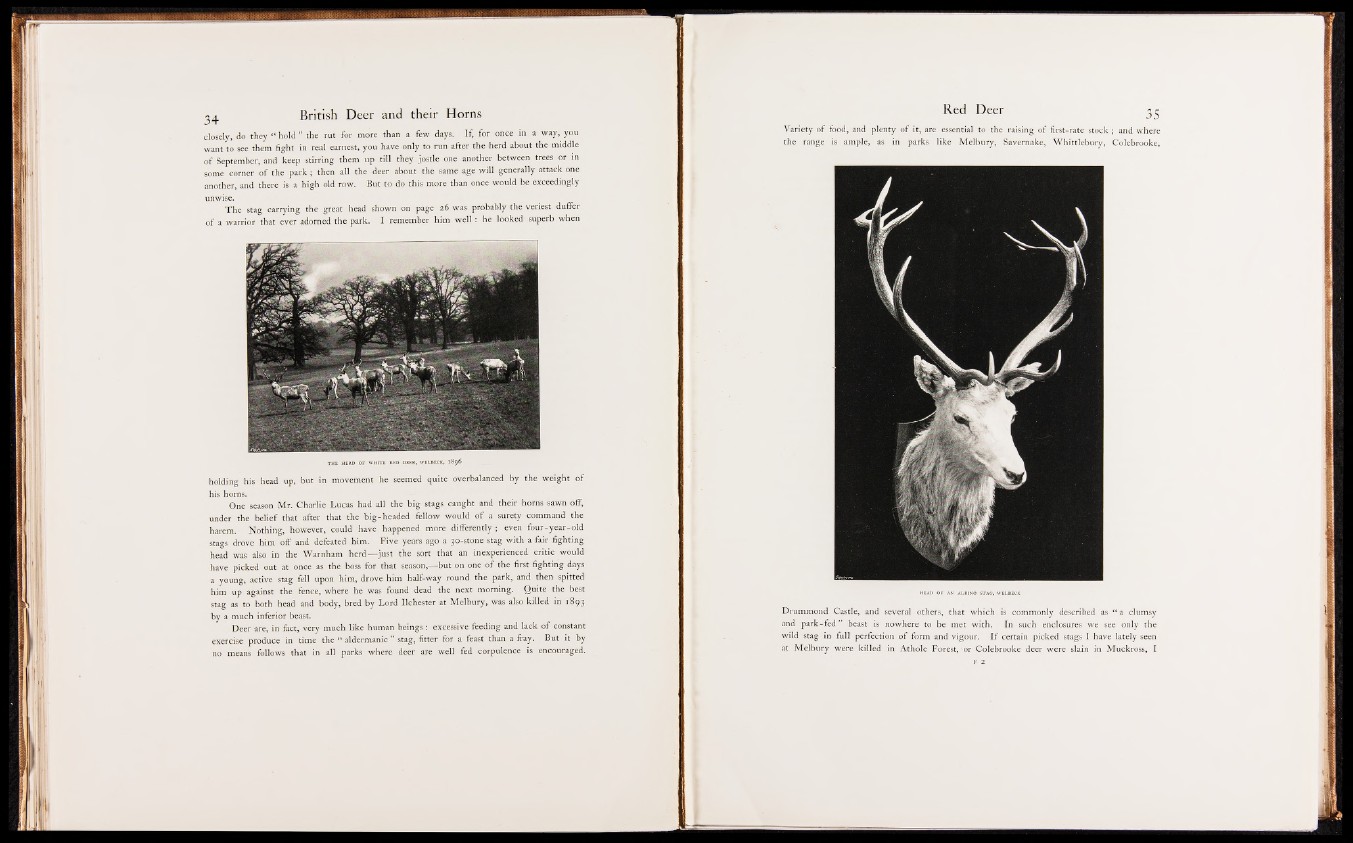
closely, do they “ h o ld ” the rut for more than a few days. If, for once in a way, you
want to see them fight in real earnest, you have only to run after the herd about the middle
o f September, and keep stirring them up till they jostle one another between trees or in
some corner o f the park ; then all the deer about the same age will generally attack one
another, and there is a high old row. But to do this more than once would be exceedingly
unwise.
The stag carrying the great head shown on page 26 was probably the veriest duffer
o f a warrior that ever adorned the park. I remember him well : he looked superb when
THE HERD OF WHITE RED DEER, WELBECK, 1896
holding his head up, but in movement he seemed quite overbalanced by the weight o f
his horns.
One season Mr. Charlie Lucas had all the big stags caught and their horns sawn off,
under the belief that after that the big-headed fellow would o f a surety command the
harem. Nothing, however, could have happened more differently ; even four-year-old
stags drove him off and defeated him. Five years ago a 36-stone stag with a fair fighting
head was also in the Warnham herd— just the sort that an inexperienced critic would
have picked out at once as the boss for that season,— but on one o f the first fighting days
a young, a.ctive stag fell upon him, drove him half-way round the park, and then spitted
him up against the fence, where he was found dead the next morning. Quite the best
stag as to both head and body, bred by Lord Ilchester at Melbury, was also killed in 1893
by a much inferior beast.
Deer are, in fact, very much like human beings : excessive feeding and lack o f constant
exercise produce in time the “ aldermanic ” stag, fitter for a feast than a fray. But it by
no means follows that in all parks where deer are well fed corpulence is encouraged.
Variety o f food, and plenty o f it, are essential to the raising o f first-rate stock ; and where
the range is ample, as in parks like Melbury, Savernake, Whittlebury, Colebrooke,
Drummond Castle, and several others, that which is commonly described as “ a clumsy
and park-fed ” beast is nowhere to be met with. In such enclosures we see only the
wild stag in full perfection o f form and vigour. I f certain picked stags I have lately seen
at Melbury were killed in Athole Forest, or Colebrooke deer were slain in Muckross, I
f 2
i